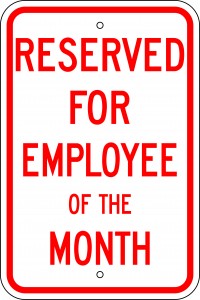Finding the right wellness vendor is crucial to implementing a successful wellness program, but a vendor can only do so much. Successful wellness programs require building a culture of health and wellness, which means more than just finding the right vendor or partner – there are “other things” that employers must do. This is the first post in a series that addresses the “other things” that are crucial to fostering a culture of health and wellness.
Part 1: Senior Leadership Support
Senior leadership must fully support and promote a culture of health and wellness. This means more than just participating in a wellness program (although this is a must!). It means embracing the spirit of the program and enabling others to maximize their participation. Employees must recognize that senior leadership views wellness as a high priority and critical component of the company’s strategic vision. For example, by hosting and encouraging walking meetings, company leaders can demonstrate their commitment to the program.

If a wellness program is launching, senior leadership should be present and actively involved in communicating the details of the program. This communication should be clear and direct. Employees should know that the company views wellness as a high priority, why the company wants them to participate, what benefits they will receive in return, etc. Senior leadership views wellness as critical, and employees will too once they understand why. Helpful tip: when reporting on the success of the company (e.g., quarterly bookings, profitability, etc.), include wellness participation as a key performance indicator that is worth mentioning. It will highlight the importance of wellness from management’s perspective. Part of senior leaders’ wellness communication should involve rewarding wellness. Leaders should reward employees for participation and wellness achievement in a similar way to how they reward employees for a client win. By rewarding employees we don’t just mean providing a budget for financial incentives, but instead finding unique ways to commend wellness engagement. For example, senior leaders can mention employees who were active wellness participants during internal town hall meetings. Do employees receive tombstones for closing important deals, how about a trophy to reward wellness?

Being a cheerleader for the program is not enough. Senior leadership needs to lead by example so participation is a REQUIREMENT. Without their participation, senior leadership communication and support for wellness will fall upon deaf ears and the foundation for a culture of wellness will never be built. I once had a boss who left work early once a week to play in a racquetball league. His action signaled to employees that wellness was a priority and that it was okay to make time for your health, even if it meant leaving the office early once a week. If a senior leader sets an example by openly making wellness a priority, employees will follow. Culture starts from the top down; wellness is no different.
Companies can start to tell that a culture of wellness is beginning to take hold in their organization. A wellness vendor should provide hard numbers around engagement and ROI, but senior leadership will start to see it with their employees and how they think about their health. Employees will schedule walking meetings, request healthier lunches, ask for a standing desk, and proactively take other steps to improve their health and happiness.












